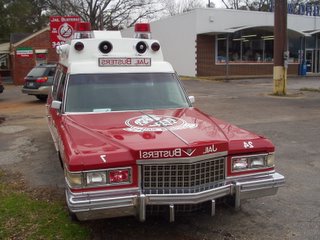I never heard of the great Alabama doctor Lloyd Noland until I stumbled across a bit of trivia on the Internet Movie Database: Supposedly, the late actor Lloyd Nolan, who often played doctors (in the movie
Peyton Place and the TV sitcom
Julia, for example), bore a strong resemblance to an actual Alabama doctor named Lloyd Noland, causing confusion through the years.
So I went looking for information on Lloyd Noland and was initially disappointed to find that he really didn’t look much like Lloyd Nolan. Certainly his name frequently was misspelled as Nolan through the years, even in legal documents -- just as Nolan’s name frequently was misspelled Noland through the years, even in movie reference books.
But it wasn’t an entirely false lead, because it led me to a fascinating story and to an ongoing Alabama curiosity.
An iron and coal company brought Noland to Jefferson County in 1917. He had been chief surgeon of a 600-bed hospital in Panama, working under George Crawford Gorgas during the Panama Canal project, and upon arrival in Alabama he set to work ridding Birmingham of the same endemic diseases the public-health pioneers had been fighting in Panama: smallpox, typhoid, dysentery, malaria.
The persuasive Noland talked his employers into building a $750,000 hospital – a remarkable achievement, considering that sum was larger than the entire public-health budget of the state of Alabama. He also was a pioneer in establishing an anesthesiology program and a residency program for the training of young doctors.
For many years, Lloyd Noland Hospital in Fairfield, a southwest Birmingham suburb, was the leading hospital in Jefferson County; for decades, it served thousands of elderly and low-income people.
In the 1990s, the aging hospital was bought by HealthSouth and renamed HealthSouth Metro West. Lloyd Noland Parkway, the street leading to the hospital, was renamed Richard M. Scrushy Parkway, after HealthSouth’s flamboyant CEO.
Soon after, HealthSouth became mired in a colossal corporate scandal. Fifteen executives, including every finance chief in HealthSouth’s 20-year history, pleaded guilty in a $2.7 billion accounting fraud; Scrushy himself was controversially acquitted, though he’s still the target of lawsuits.
The old Lloyd Noland Hospital was closed.
Exit signs on I-20/59, near Miles College, still beckon travelers onto Richard M. Scrushy Parkway, while the name of the man who rid Birmingham of its Third World plagues less than a century ago is mostly forgotten.
Noland’s name survives, however, via the non-profit Noland Health Services, based in Fairfield, which operates long-term hospitals and retirement communities across the state. Its website,
www.nolandhealth.com, still lists its address as Lloyd Noland Parkway.
==
An anonymous reader comments April 7, 2006:
"Having been an employee of Lloyd Noland Hospital for many years, I think it is important to also identify that the hospital was initially sold to Tenet (which owns Brookwood Medical Center [in Birmingham]) before the HealthSouth acquisition. ... The legacy that was Dr. Lloyd Noland continues to live on in the hearts and minds of those who knew him, worked with him, and followed his example. His vision of health care was a bright point of light in the vast desolation and a remarkable touchstone for the medical machine that continues to grow here in Birmingham and surrounding areas."
Well said, and thanks for the Tenet info.



